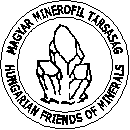OXIDES
Zincalstibite - Zn2AlSb(OH)12, trigonal
Locality: Fehér Hill, Telkibánya, Tokaj Mts.
Description: pale grey encrustation on a pyrargyrite crystal with 0.05 mm in thickness (Fig. 1).
Collector: Gábor Koller (Szentendre).
Examinations: XRD (Béla Fehér, Herman Ottó Museum, Miskolc) and EDS (Árpád Kovács, University of Miskolc).
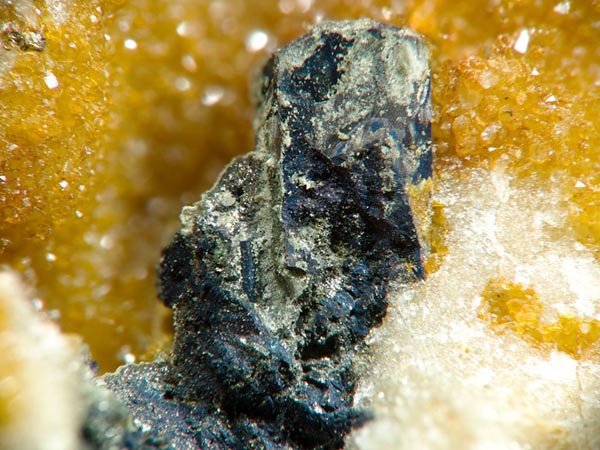
Rosiaite - PbSb2O6, trigonal
Locality: Likas-kő Hill, Lovasberény, Velence Mts.
Description: colourless or pale yellow hexagonal tabular crystals up to 0.1 mm in diameter (Fig. 2).
Collector: Gábor Koller (Szentendre).
Examinations: XRD (Béla Fehér, Herman Ottó Museum, Miskolc) and EDS (Árpád Kovács, University of Miskolc).
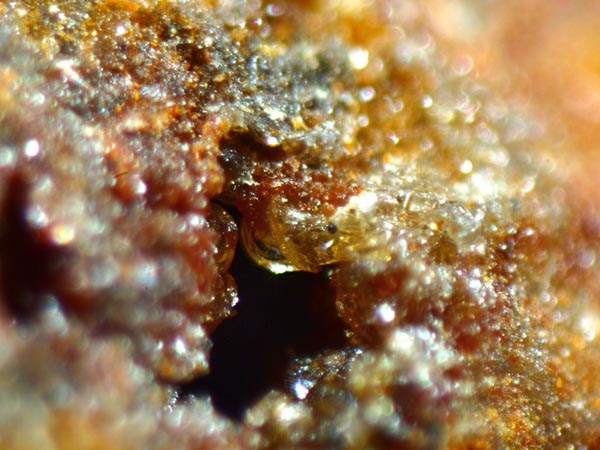
CARBONATES, NITRATES
Gerhardtite - Cu2NO3(OH)3, orthorhombic
Locality: abandoned iron ore open pit, Rudabánya, Aggtelek-Rudabánya Mts.
Description: bluish green, translucent massive aggregates up to 2 mm and idiomorphic tabular crystals up to 1 mm in diameter in vugs of cuprite. The mineral has an excellent cleavage in one direction and it decomposes easily into thin lamellae. Gerhardtite has a pearly lustre on the cleavage surfaces (Fig. 3).
Collector: Gábor Koller (Szentendre) was bought it from local collectors.
Examinations: XRD (Sándor Szakáll), EDS (Norbert Zajzon) and wet chemistry for nitrate group (János Lakatos, all at the University of Miskolc).
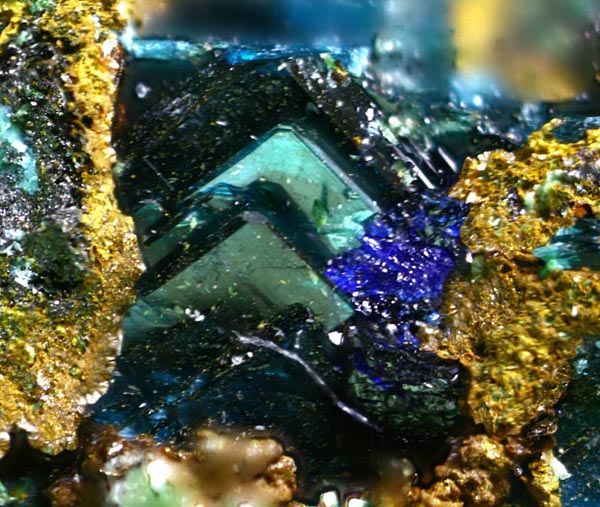
ARSENATES
Arthurite - CuFe2(AsO4,PO4,SO4)2(O,OH)2 • 4H2O, monoclinic
Locality: Likas-kő Hill, Lovasberény, Velence Mts.
Description: lemon yellow globular-radial aggregates consisting of acicular crystals up to 0.1 mm in diameter (Fig. 4).
Collectors: Gábor Koller (Szentendre) and László Tóth (Velence).
Examinations: XRD (Béla Fehér, Herman Ottó Museum, Miskolc) and EDS (Árpád Kovács, University of Miskolc).

Klajite - MnCu4(AsO4)2(AsO3OH)2 • 9H2O, triclinic
Locality: Rm-48 inclined adit (Lejtakna), Lahóca Hill, Recsk, Mátra Mts.
Description: klajite forms sheaf-like aggregates which are made up of lath-like to thin tabular crystals in divergent arrangement, typically 0.05-0.2 mm in length. The crystals commonly form complicated intergrowths. The largest aggregates reach 0.5 mm in diameter. The mineral is translucent, greenish yellow to yellowish green in colour with white streak and vitreous lustre. Klajite was found in cavities of enargite ore together with quartz and a sky-blue, unknown Ca-Cu arsenate. It is a secondary mineral formed by the decomposition of primary enargite and perhaps manganoan tennantite in the oxidation zone of the ore deposit (Fig. 5). This new mineral was approved by the IMA CNMNC (IMA no. 2010-004). It was named after Sándor Klaj (b. 1948), a Hungarian mineral collector, who collected the mineral in 1995.
Collector: Sándor Klaj (Pécs).
Examinations: see Szakáll et al. (2010).

Lavendulan - NaCaCu5(AsO4)4Cl • 5H2O, orthorhombic
Locality: Likas-kő Hill, Lovasberény, Velence Mts.
Description: light blue globular aggregates up to 0.05 mm in diameter (Fig. 6).
Collectors: Gábor Koller (Szentendre) and László Tóth (Velence).
Examinations: XRD (Béla Fehér, Herman Ottó Museum, Miskolc) and EDS (Árpád Kovács, University of Miskolc).
Remark: some years ago Szakáll (2001) noted lavendulan from Rudabánya, but that identification was false according to the new investigations.

Parnauite - Cu9(AsO4)2(SO2)(OH)10 • 7H2O, orthorhombic
Locality: Likas-kő Hill, Lovasberény, Velence Mts.
Description: light bluish green loose aggregates consisting of minute (0.01 mm in diameter) flakes which have typical pearly lustre (Fig. 7).
Collector: Gábor Koller (Szentendre).
Examinations: XRD (Béla Fehér, Herman Ottó Museum, Miskolc) and EDS (Árpád Kovács, University of Miskolc).
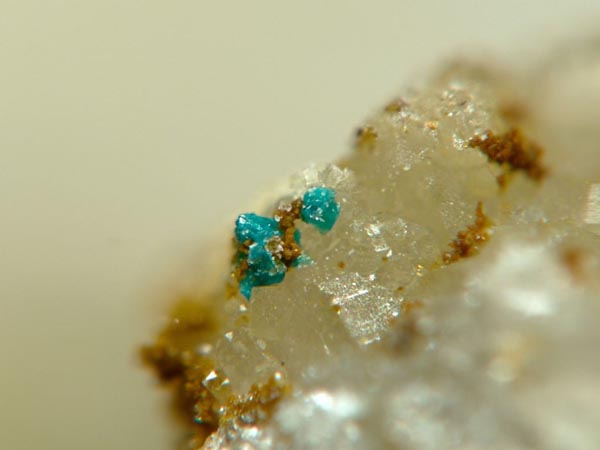
SILICATES
Tschernichite - Ca[Al2Si6O16] • 8H2O, tetragonal
Locality: Mraznica Hill, Markaz, Mátra Mts.
Description: colourless or yellowish due to iron oxide stains steep tetragonal dipyramidal crystals with basal terminations up to 1 mm. Crystals can form complicated (e.g. star-shaped) aggregates in cavities of andesite. It is associated with tridymite, quartz, biotite, stellerite, heulandite and chabazite in order of formation (Fig. 8).
Collector: Gábor Koller (Szentendre).
Examinations: XRD (Béla Fehér, Herman Ottó Museum, Miskolc) and WDS (Simona Bigi, University of Modena, Italy).

